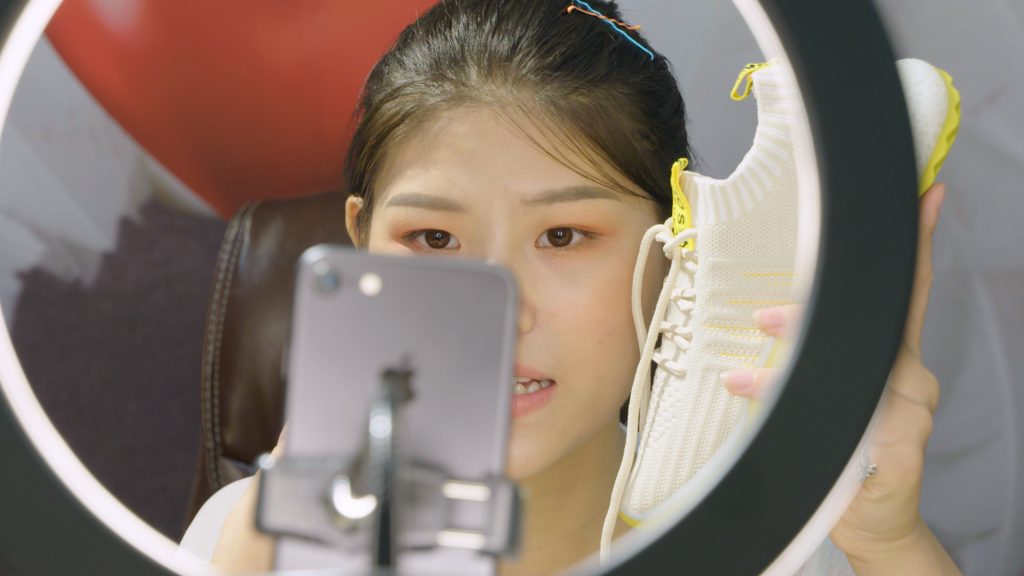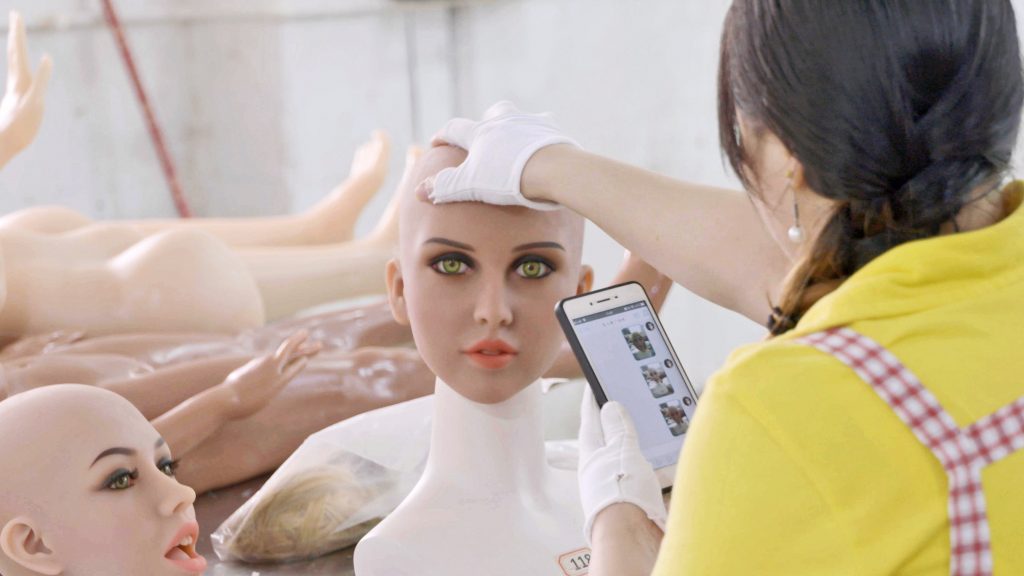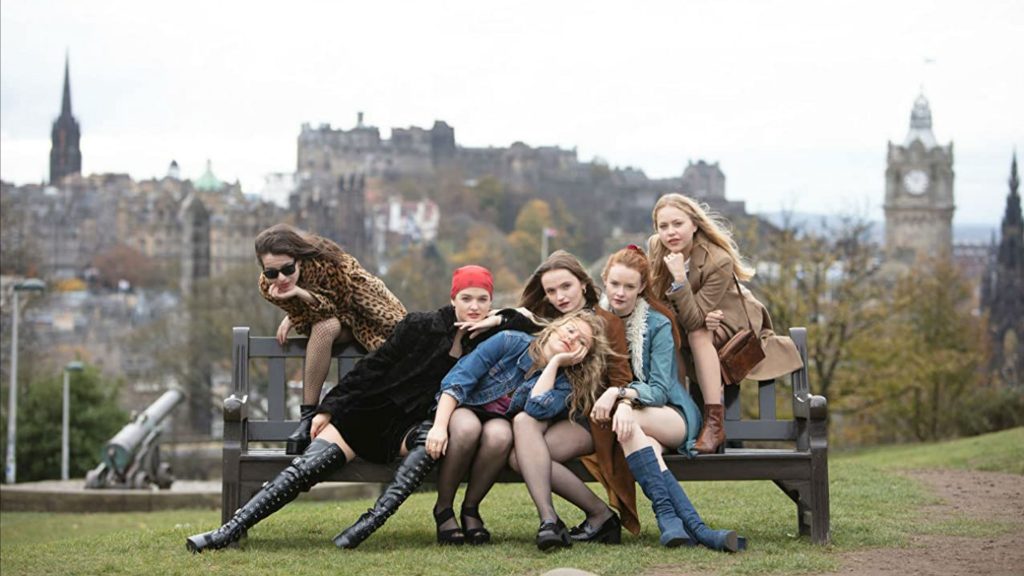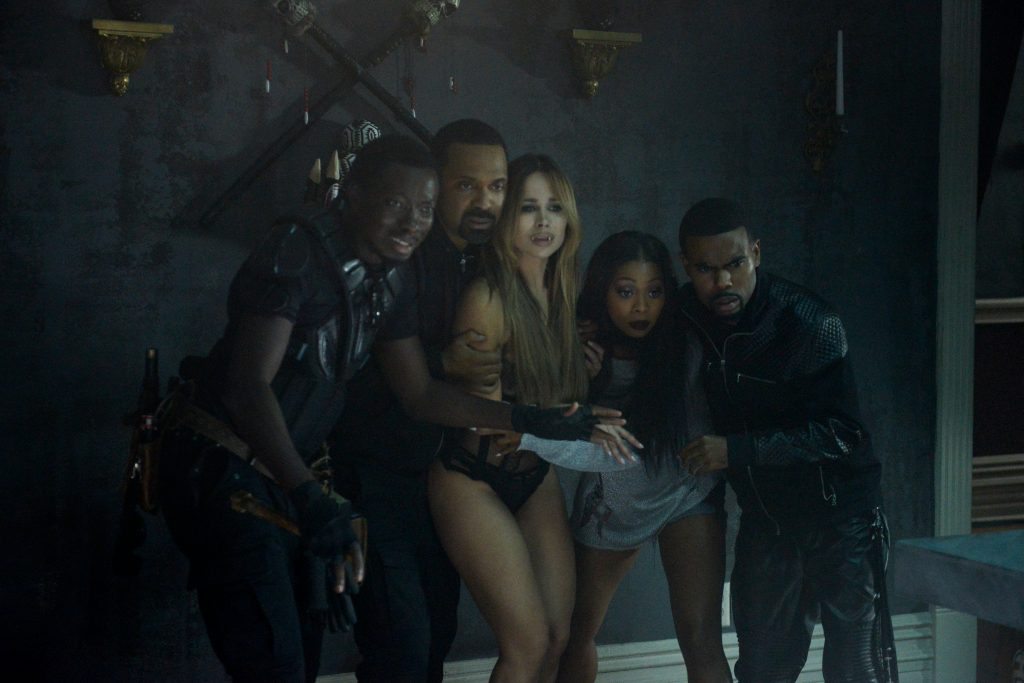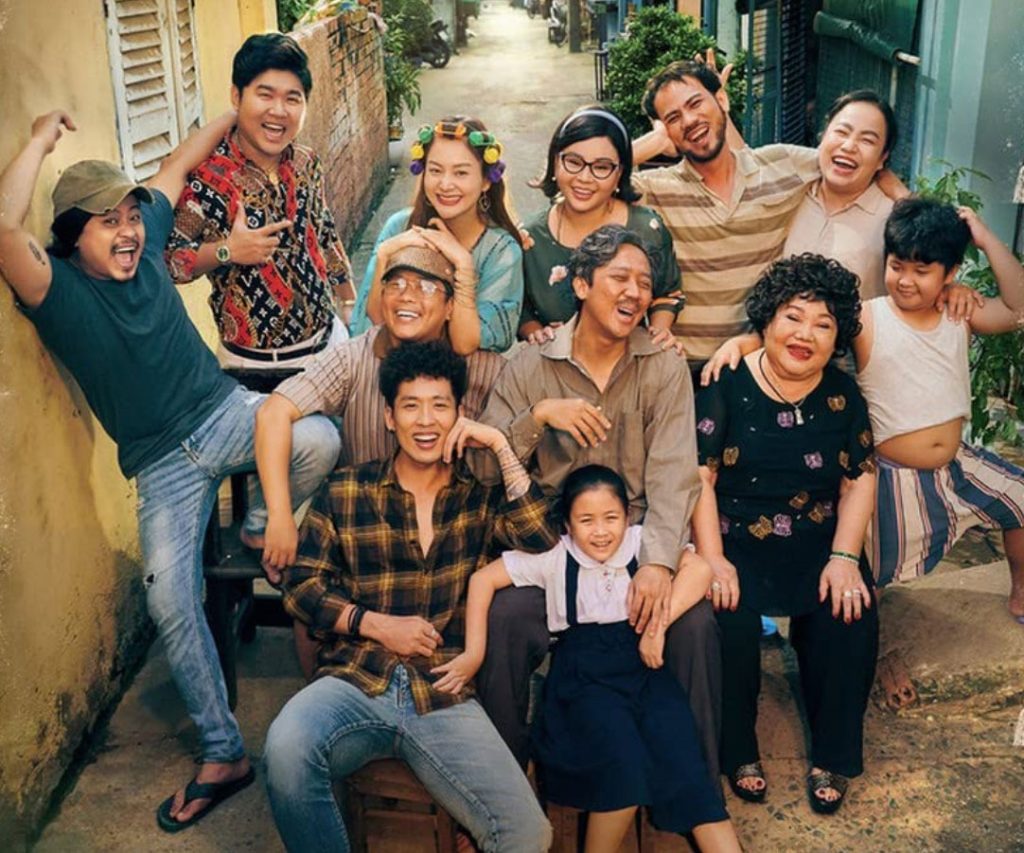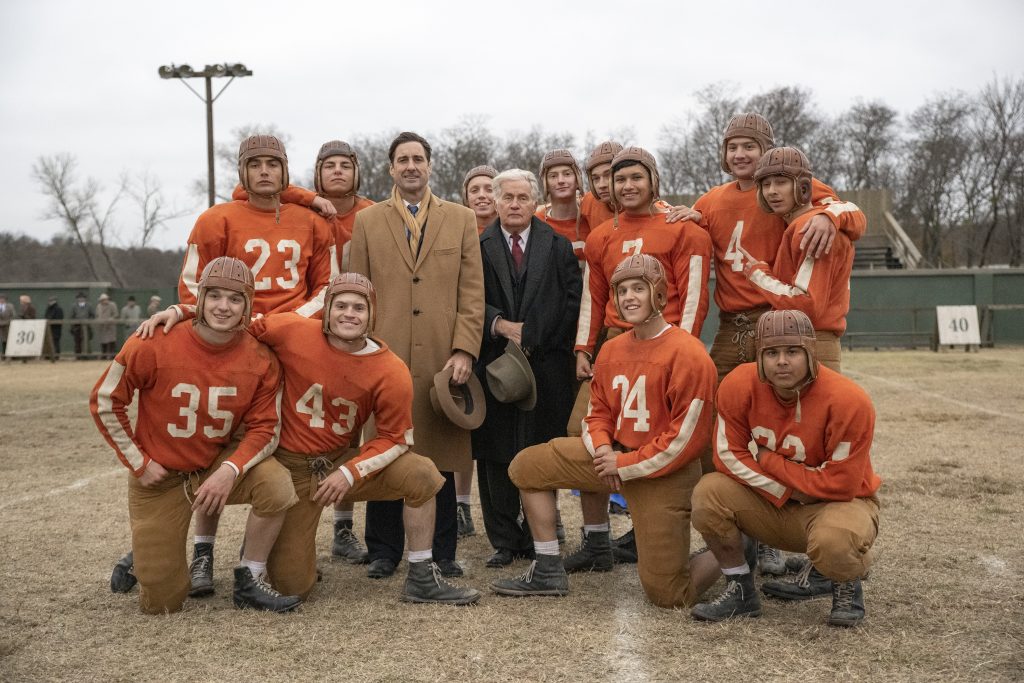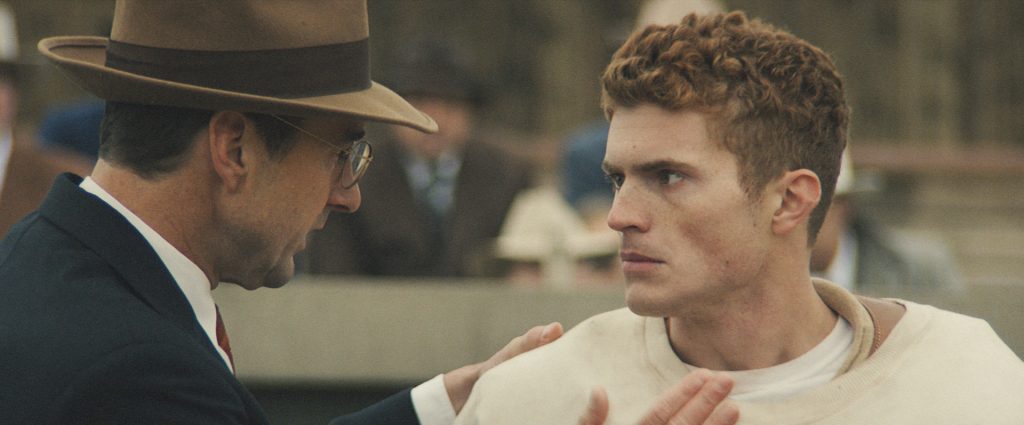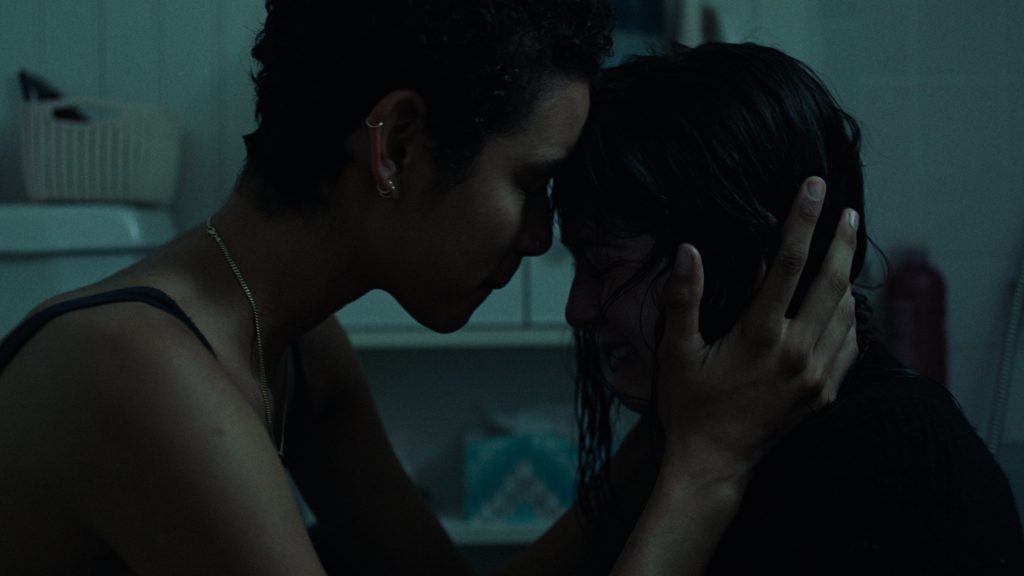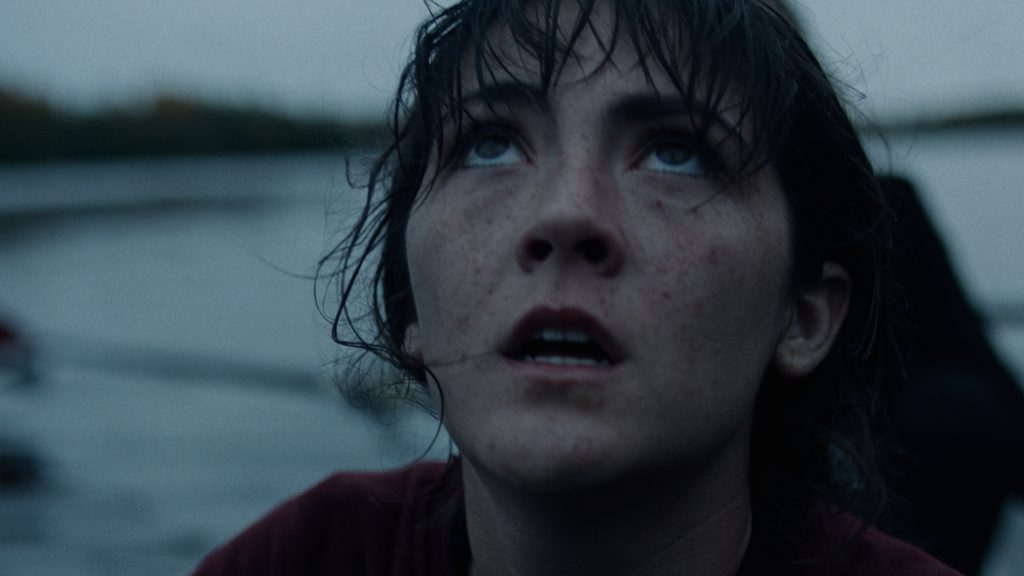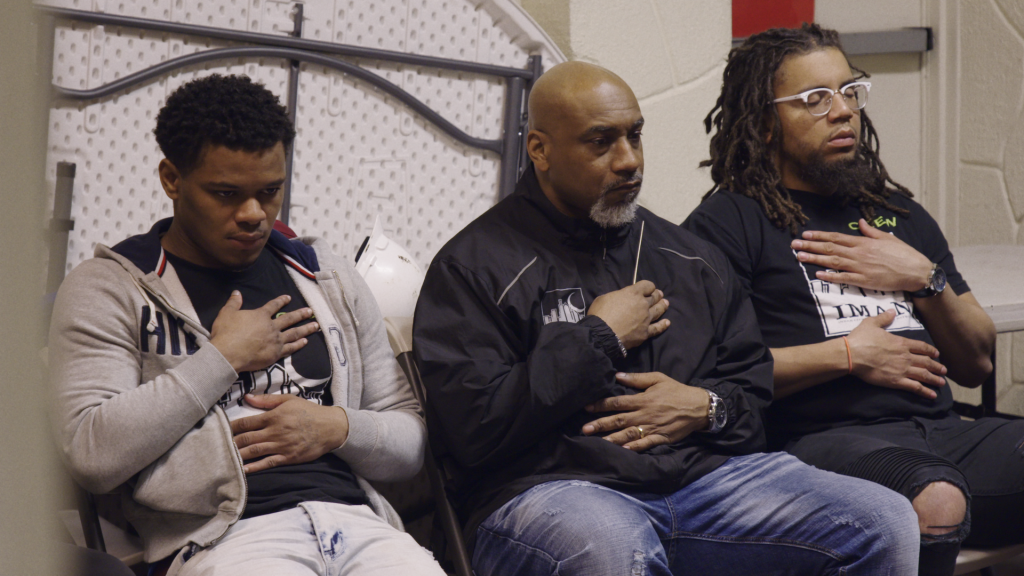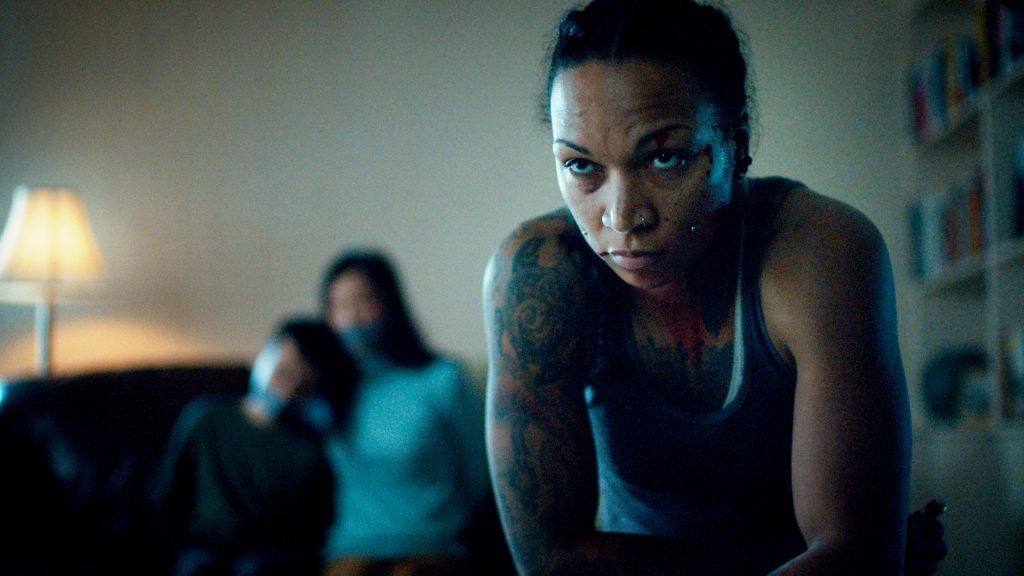June 25, 2021
by Carla Hay

Directed by Justin Lin
Culture Representation: Taking place in the United States, Spain, the United Kingdom, Japan, Germany, Azerbaijan and the nation of Georgia, the action flick “F9” features a racially diverse cast of characters (black, white, Latino and Asian) representing the middle-class and wealthy in law enforcement and the criminal underground.
Culture Clash: A daredevil team tries to save the world from a group of criminals that includes an assassin who is the estranged brother of the daredevil leader.
Culture Audience: Besides appealing to fans of the “Fast and the Furious” movie franchise, “F9” (the ninth movie in the series) will appeal primarily to people who want to a predictable action flick with high-budget stunts and low-quality screenwriting.

At this point, movies in the “Fast” movie franchise (which began with 2001’s “The Fast and the Furious”) are no longer rooted in reality and have become over-the-top spectacles for people who want to shut their brains off for a couple of hours while they watch. And that’s okay, if there’s a coherent plot and the stunts are truly creative. But “F9” (the ninth film in the series) is an example of a sequel that’s too bloated, too self-satisfied and too lazy. This movie needed less stunt casting and more impressive stunts that don’t insult people’s intelligence.
Directed by Justin Lin (who co-wrote the abysmal “F9” screenplay with Daniel Casey), “F9” is best described as a live-action movie written and directed like a sloppy cartoon for people with no attention span and no expectations to see an intriguing thriller beyond predictable chase scenes, shootouts and explosions. It’s another “we have to save the world from a power-hungry villain” story, but there’s no real creativity or suspense in this overstuffed, 145-minute movie that tries to distract viewers from the weak plot by zipping around the world to different locations. Too bad with all that globetrotting in search of the villain, the “F9” team couldn’t find anything resembling a suspenseful story, because almost every twist and turn can be easily predicted.
The main characters in the “Fast” saga have become so egotistical and conceited that there are multiple times in the movie where they wonder out loud to each other if their death-defying luck might be because they aren’t mere mortals but might in fact have superpowers. “F9” is not a superhero movie, although it would be a better explanation for some of the ridiculous outcomes of battles where real human beings would die, but these “heroes” just get injuries that are never fatal and they recover in ways that are too quick to believe.
And this wouldn’t be a “Fast” movie without constant use of the word “family.” It can become a drinking game to take a drink every time the word “family” is said in a “Fast” movie. This time around, “F9” is especially enamored with adding more people to the “family,” with some unnecessary stunt casting that looks very out of place. If “F9” is the first movie that people see in the “Fast” series, they might be a little confused, because the movie assumes that viewers will already know a lot of the characters’ backstories. It’s best to watch 2017’s “The Fate of the Furious,” because most of the main characters in that movie are in “F9.”
Here’s a handy summary of who’s in the movie and how their screen time is used in “F9.”
The Heroes
- Dominic “Dom” Toretto (played by Vin Diesel) is the leader of the daredevil crew that started out as outlaw drag racers and now have vague duties a security/spy team hired to help out government officials and elite business people who are targets of villains who want to take over the world. Vinnie Bennett portrays a young Dom in the movie’s several flashbacks to when Dom was in his late teens.
- Letty Ortiz (played by Michelle Rodriguez) is Dom’s on-again, off-again girlfriend. In “F9,” Dom and Letty are happily living together with Dom’s son Brian, who’s about 4 or 5 years old in this movie. Brian’s mother Elena Neves (played by Elsa Pataky) was a Diplomatic Security Service agent who died in “The Fate of the Furious.”
- Mia Toretto (played by Jordana Brewster) is Dom’s loyal younger sister who goes along with whatever Dom wants. Mia is the love partner of Dom’s best friend Brian O’Conner (played by Paul Walker), who is the father of their son Jack. Walker died in real life in 2013, but Brian is supposed to be happily retired.
- Roman Pearce (played by Tyrese Gibson) is a nervous and talkative member of Dom’s team. The running joke with Roman is that he’s always anxious about getting into dangerous situations. Expect Roman to scream at least twice in every “Fast” movie.
- Tej Parker (played by Chris “Ludacris” Bridges) is Roman’s level-headed best friend who has skills as a mechanic and a computer technician.
- Ramsey (played by Nathalie Emmanuel) is a British computer hacker who has essentially taken over from Tej as being the “computer whiz” on Dom’s team.
- Han Lue (played by Sung Kang) supposedly died in 2013’s “Fast & Furious 6,” but he makes a notable but brief return in “F9.” Han’s return is not spoiler information, since it’s part of this movie’s publicity, and his re-appearance has this explanation: He faked his own death.
The Villains
- Otto (played by Thue Ersted Rasmussen), a wealthy German mogul with vast political connections who wants to take over the world.
- Jakob Toretto (played by John Cena), Dom’s estranged younger brother, who works with Otto as Otto’s top assassin. Finn Cole portrays a young Jakob in his late teens in the movie’s flashback scenes.
- Cypher (played by Charlize Theron), a cyberterrorist who was the chief villain in “The Fate of the Furious.” In “F9,” she spends most of her screen time literally locked up in a glass cage.
The Rest
- Sean (played by Lucas Black), Twinkie (played by Shad Moss, also known as Bow Wow) and Santos (played by Don Omar) are three mechanics who are in the movie mostly for comic relief. They’re like the Three Stooges of the “Fast” movie franchise.
- Mr. Nobody (played by Kurt Russell) is a powerful undercover operative who works with Dom’s team. A plane hijacking involving Mr. Nobody sets off the rescue mission in the movie.
- Elle (played by Anna Sawai) is an associate of Han’s who plays a key role in this mission.
- Stasiak (played by Shea Whigham) is an FBI agent who works with Mr. Nobody.
- Buddy (played by Michael Rooker) is a mechanic who raised Jakob after Jakob’s father died.
- Queenie Shaw (played by Helen Mirren) is the mother of Deckard Shaw (played by Jason Statham), a longtime nemesis of Dom’s team.
Through a distress video found in Mr. Nobody’s hijacked plane, Dom and his team find out that Jakob was one of the chief people behind the hijacking. Otto and Jakob are after a device called Aries, which has the ability to hack into defense and banking systems around the world. It’s the type of device that any self-respecting villain with world domination goals would want to have.
Aries has been split into two. Jakob and Otto have one half of Aries, and they’re in a race against time with Dom and his team to get the other half of Aries. Cypher is being held captive by Otto and Jakob, who try to get her advice on how to find Aries and thwart Dom and his team. The stakes are more personal for Dom and Jakob because of their family feud.
The origin of this brotherly vendetta is shown through flashbacks. It has to do with the death of Dom and Jakob’s father Jack Toretto (played by JD Pardo), who died during a car race witnessed by Dom and Jakob. Siena Agudong plays a young Mia in these flashbacks.
Various parts of Dom’s team travel to different parts of the world to find the missing half of Aries. Cardi B has a very quick cameo as Leysa, someone from Dom’s past. People might laugh when they see what type of role she has in this movie. (No, she isn’t a stripper.) Along the way, Roman and Tej go into space using a rocket car that was built by Sean, Twinkie and Santos. Now, try say all of that out loud with a straight face.
The Pontiac Fiero that goes into space (by having a cheap-looking rocket launcher attached) is the most ridiculous part of this movie’s dumb plot. But to the movie’s credit, “F9” even knows how stupid this space rocket car gimmick is, because Roman and Tej keep saying while they’re in outer space that they have no idea what they’re doing there. In real life, Roman and Tej would also be dead in space, based on the flimsy-looking spacesuits they wear in this movie. But when a movie is self-aware of how idiotic it is, it doesn’t make the idiocy any better.
There are many examples of how “F9” is wasteful, including how it squanders the great talent of Oscar-winning actresses Mirren and Theron. Mirren’s Queenie character (who is a jewel thief) literally does nothing in the movie but drive Dom somewhere after she’s committed a jewelry heist. The movie makes a point of showing how Queenie is wearing animal print boots underneath her elegant gown and high-priced jewelry. Mirren might as well have been wearing a T-shirt that says, “I’m Just Here for the Paycheck.”
Theron spends most of her “F9” screen time as a prisoner in a glass cage, which is the type of cage that people have for large animals. And speaking of sexist depictions of women, the movie has a mansion party scene where only modelesque, scantily clad women wearing white are gathered on the front lawn, as if they’re only there to be sex objects on display. “F9” villain Otto is the host of the party, so “F9” filmmakers can shift the blame to the evil character being responsible for objectifying women. But it just comes across as director Lin deciding to objectify women in this scene just because he could.
Of course, Letty, Mia and Ramsey all embody what it means to be good and strong women. But make no mistake: The men are in charge in these movies. No matter how much Letty, Mia and Ramsey are given to do, all three women are ultimately under Dom’s leadership. So much for female empowerment.
“F9” is one of the worst of the “Fast” franchise because even the chief villain Otto is forgettable and badly written. He comes across as a spoiled wimp, with the wardrobe of a dorky playboy, including wearing tacky leisure suits with loafers and no socks. There’s absolutely nothing scary about Otto. However, look for Statham’s Shaw character to make a mid-credits cameo in “F9.” Statham’s appearance is a reminder of how much better this movie series is when it has a truly menacing villain.
As for Jakob, he’s all brawn and very little brain, just like many characters Cena tends to play in action movies. The flashback scenes take up a lot of time and some could easily have been cut out of the film and still made their point. Diesel continues to display wooden acting. The rest of the cast members are serviceable in their roles. The movie’s flashbacks serve as the emotional core of the over-used theme in “Fast” movies: family.
And the return of Han doesn’t happen until the last third of the movie. The not-very-believable explanation for Han’s “return from the dead” is so cringeworthy, even actor Kang seems a little embarrassed to utter the lines. You’d have to believe that Han (who supposedly died in a car explosion) had a similar-looking replacement corpse nearby before the car exploded, and that he was not only able to jump out of the car in time but also put another corpse in the car instead. You’d also have to believe that a medical examiner wouldn’t be able to detect through DNA or dental records that Han’s body wasn’t the body that was found in the car.
With all that being said, die-hard fans won’t care how bad “F9” is because they just want to see fight scenes, car chases and explosions. And in that respect, “F9” does deliver, but not as well as previous “Fast” films that Lim directed. He also directed 2006’s “The Fast and the Furious: Tokyo Drift,” 2009’s “Fast & Furious,” 2011’s “Fast Five” and “Fast & Furious 6.” Those other four movies have something that “F9” severely lacks: a story with some genuine and unique surprises, not coasting entirely on past glories.
Universal Pictures released “F9” in U.S. cinemas on June 25, 2021. The movie was released in various other countries, beginning on June 19, 2021.

